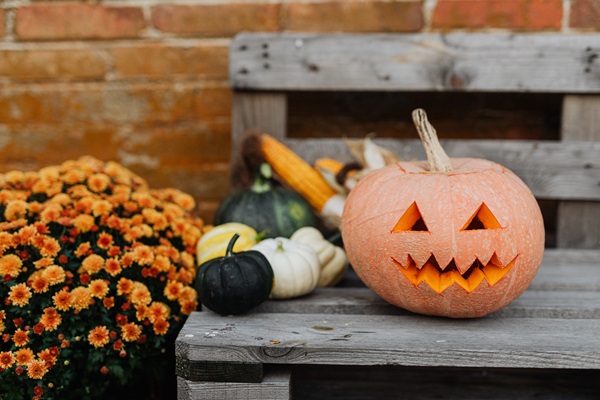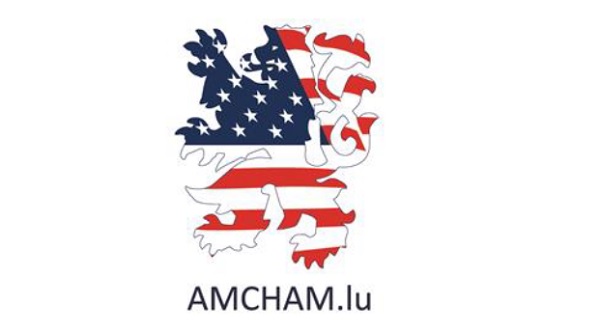 Credit: Pexels
Credit: Pexels
Hallowe’en is celebrated each year on 31 October and has become a cherished holiday in many parts of the world.
It is a time for costumes, frightening stories and plenty of sweet treats. The history of Hallowe’en has roots tracing back thousands of years but commercialisation and globalisation have turned it into a global phenomenon in recent years. This article looks at the evolution of Hallowe'en, from its ancient origins to the present day, including its spread to countries such as Luxembourg.
The history of Hallowe’en can be traced back to the ancient Celtic festival of Samhain (a Gaelic word pronounced “SAH-win”), which marked the end of summer and the harvest season and the beginning of winter. Historically it was widely observed throughout Ireland, Scotland, Galicia and the Isle of Man. Celebrated on 1 November, Samhain was a time when Celts believed that the veil between the living and the dead was at its thinnest. It was a day to honour deceased relatives and seek guidance from the spiritual world. However, it was also perceived to be a time fraught with danger, charged with fear and full of supernatural episodes. Samhain was marked by great gatherings and feasts where bonfires were lit, offerings of food and drink and sacrifices were made to the spirits to ensure the people and livestock survived the winter. Furthermore, the souls of departed kin were also thought to return to their homes seeking hospitality, so a place was set at the table for them during a meal. Villagers also disguised themselves in animal skins to drive away phantom visitors.
In the eighth century, Pope Gregory III designated 1 November as a time to honour saints. Soon after, All Saints’ Day came to incorporate some of the traditions of Samhain. The evening before All Saints’ Day was known as All Hallows Eve, and later, Hallowe’en (or simply Halloween). The “e'en” in Hallowe'en is a contraction of the word “even”, which is an archaic alternative to the words “evening” or “eve”.
In medieval Europe, children and poor villagers would go door to door in a practice named “souling” that would later become trick-or-treating. They went from door to door singing and saying prayers for the souls of the treat givers, their friends, and deceased relatives, in exchange for a Soul Cake. A Soul Cake, also known as a soulmass-cake, was a small round cake (although more like a biscuit), traditionally made using oats and may have been spiced with nutmeg, cinnamon and ginger, as well as raisins or currants.
The famous Jack-o'-lanterns are another integral part of Hallowe’en's history. Legend has it that a man named Jack, who was denied entry to both heaven and hell, was condemned to roam the earth with only a carved turnip and a burning coal to light his way. The Irish brought this tradition to the United States, where pumpkins (instead of turnips) became the primary carving material due to their abundance.
In the 19th century, Irish and Scottish immigrants brought their Hallowe’en traditions, including carving pumpkins and costumed processions, to the United States. The holiday underwent significant transformations as it assimilated into American culture.
It was in the United States that Hallowe’en gained its “scary” reputation. Influenced by gothic literature and the country's fascination with the supernatural, Hallowe’en became synonymous with witches, ghosts and haunted houses. Commercialisation started as businesses saw the potential for Hallowe’en-themed merchandise.
One of the major catalysts for Hallowe’en's commercialisation was the sweets industry. In the early 20th century, sweet makers began to promote the idea of giving sweets as a treat on Hallowe’en. Over time, trick-or-treating became a cherished tradition, with children going door to door, filling their bags with sweets. It is unknown precisely where and when the phrase “trick or treat” was coined, the custom had been firmly established in American popular culture by 1951, when trick-or-treating was depicted in the Peanuts comic strip.
The 20th century saw the rise of Hallowe’en parties, with costumes becoming more elaborate and diverse. Hallowe’en became a holiday not just for children, but for people of all ages. Commercial enterprises, from costume shops to haunted houses, boomed.
While Hallowe’en is deeply rooted in American (and earlier Celtic) culture, it has been gradually making its way across the Atlantic to European countries. Today, it has a strong presence in the Netherlands, Italy and France as well as Romania (especially in Transylvania, which is the birthplace of Vlad the Impaler, the inspiration for Dracula). In some regions, it is seen as an American import, while in others, it is simply embraced as a fun and festive occasion.
Until recent years, Hallowe’en was not widely celebrated in Luxembourg, but it has since gained popularity, especially among the English-speaking community as well as among children and young people. People in Luxembourg, particularly children, often dress up in costumes, carve pumpkins, and go trick-or-treating to collect sweets and treats. Hallowe’en-themed parties and events are also held in various places across the country, including bars and clubs. Cinemas in the Grand Duchy also usually organise special viewings of horror films on Hallowe’en. While it may not have the same cultural significance as other holidays in Luxembourg, Hallowe'en has increasingly become an occasion for spooky fun and festivities here. For example, in the run-up to Hallowe’en this year, the Abbaye de Neumünster is organising a family-friendly event in Luxembourg-Grund. Other organisations such as the British Ladies Club of Luxembourg (BLC) and the American Women’s Club of Luxembourg (AWCL) also held Hallowe’en-themed events recently.








